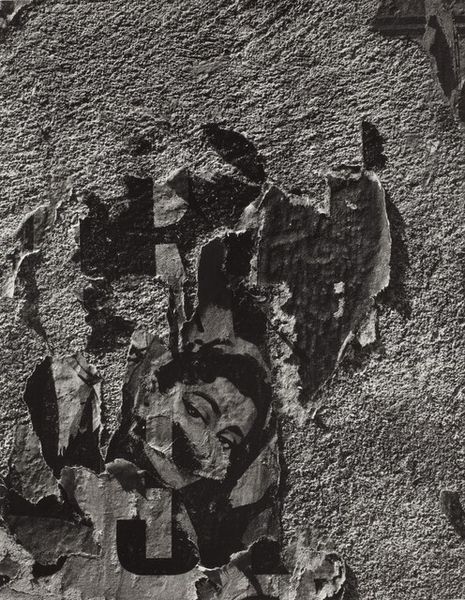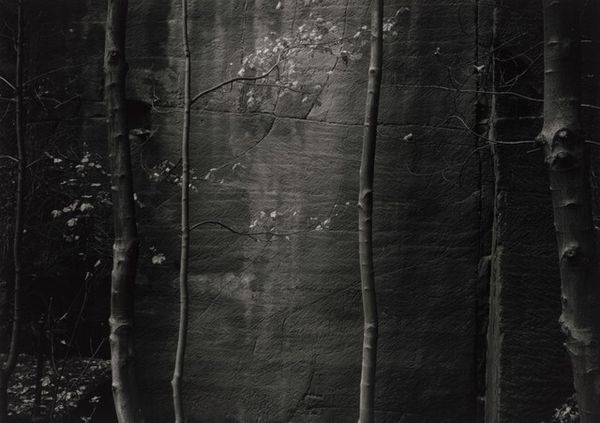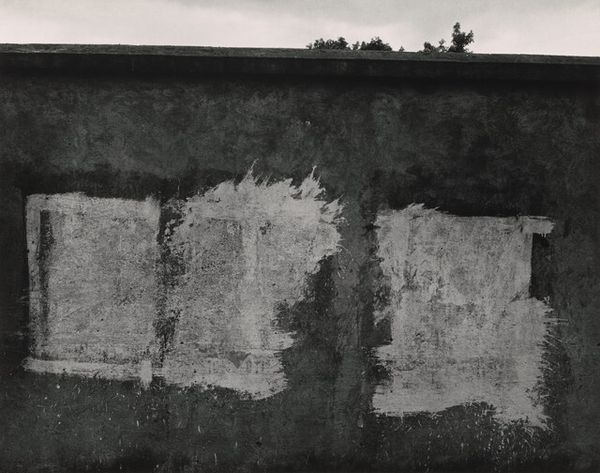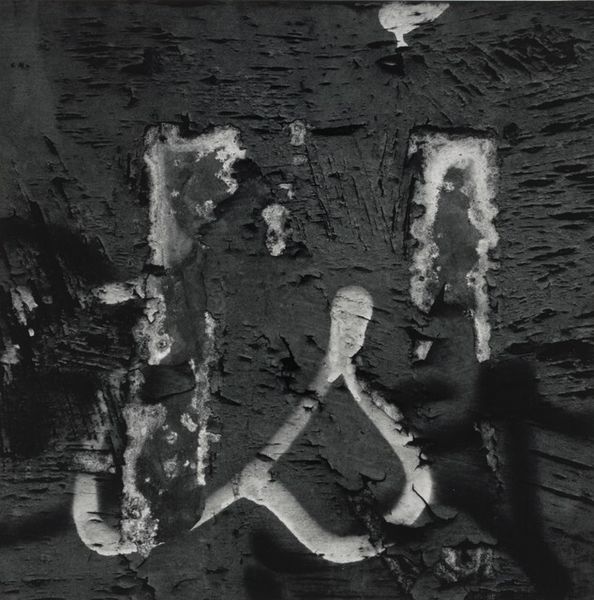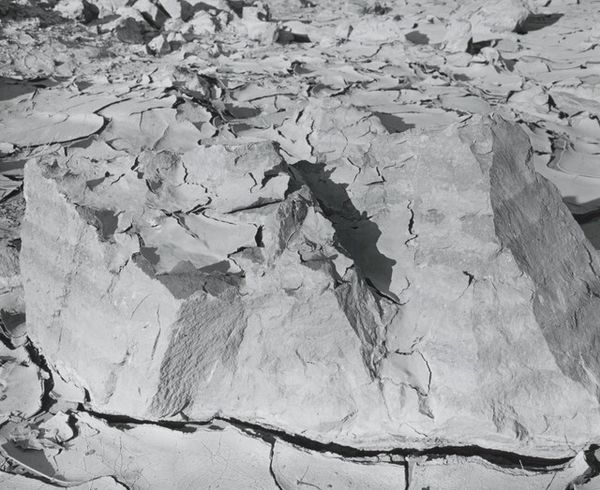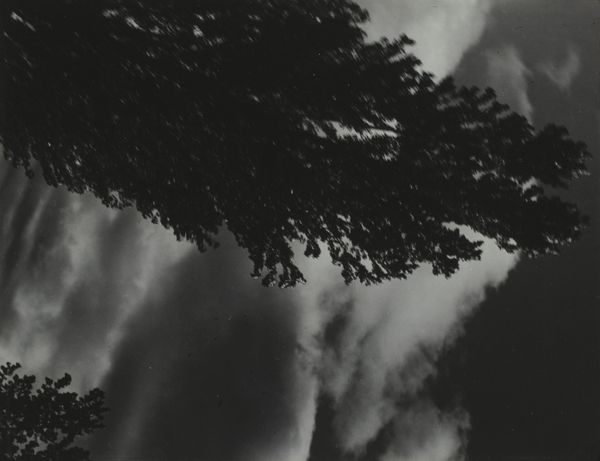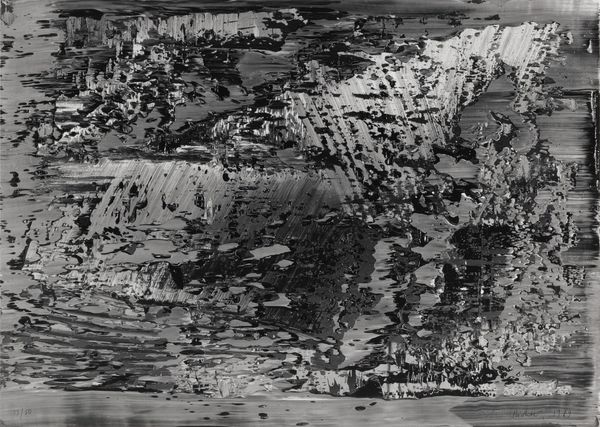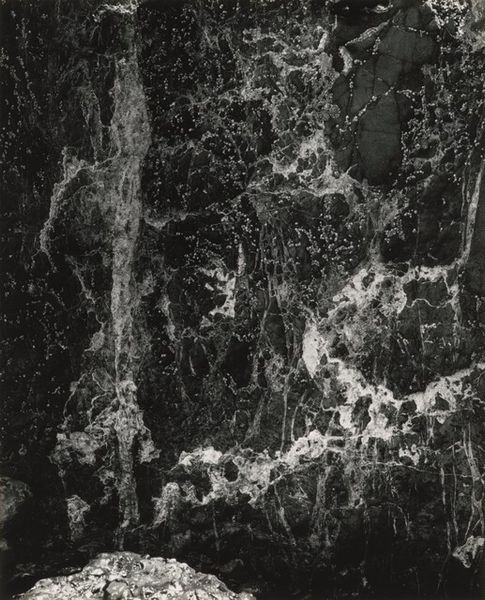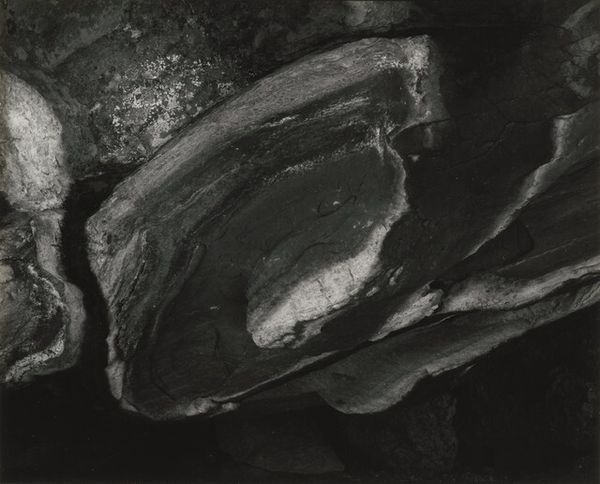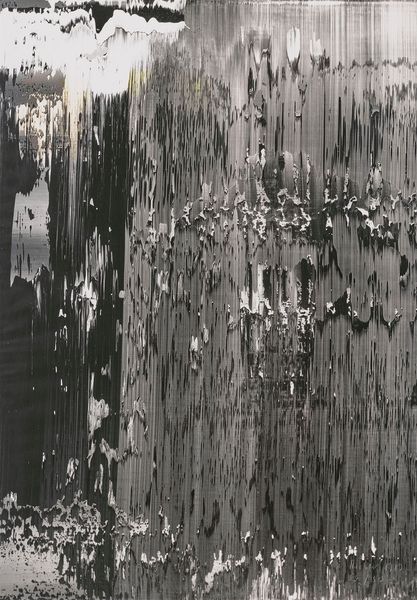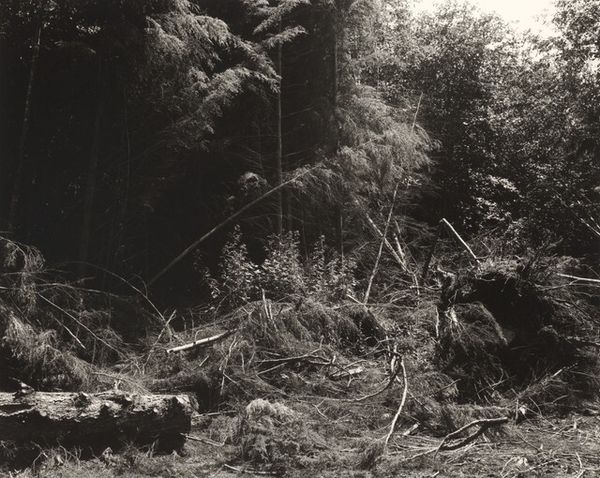
Snow Bird (Ritual Hieroglyph), Stanton Moor, Derbyshire, England 1977
0:00
0:00
photography, gelatin-silver-print
#
landscape
#
photography
#
geometric
#
gelatin-silver-print
#
realism
Dimensions: image/sheet: 11.75 × 16.83 cm (4 5/8 × 6 5/8 in.) mount: 27.62 × 35.4 cm (10 7/8 × 13 15/16 in.)
Copyright: National Gallery of Art: CC0 1.0
Editor: This is Thomas Joshua Cooper's "Snow Bird (Ritual Hieroglyph), Stanton Moor, Derbyshire, England" from 1977, a gelatin silver print. I’m struck by how much the rock face resembles a map, almost like a landform rendered in monochrome. How do you interpret this work? Curator: It’s fascinating how Cooper implicates landscape with the concept of the hieroglyph, framing the land as a text that needs to be decoded. In terms of intersectional narratives, I wonder about our own fraught relationship with landscape as a site of ownership, power, and displacement. How do indigenous claims to land and the colonial project interplay with our perception of landscape as a kind of inert "nature"? Editor: That's a powerful perspective! I hadn’t considered the photograph in terms of land ownership. It’s like the image invites us to "read" the land, but who gets to define that reading? Curator: Exactly. Think about how landscape photography has historically been used to naturalize dominant ideologies, masking the violent histories embedded within seemingly pristine environments. Does this image somehow resist that legacy for you? Does the "ritual" aspect of the title hint at the deeper, less visible layers? Editor: It does now. Perhaps it's suggesting the possibility of reclaiming these landscapes, re-inscribing them with indigenous perspectives that have been historically erased. Curator: Precisely. The photograph, then, is more than just a picture of rocks and snow. It's a provocation. It's a statement that questions what we choose to see – and not see – in our surrounding environment. Editor: That changes my entire reading of it. Thank you for illuminating the broader context at play. It gives a new appreciation to the photograph! Curator: My pleasure! Engaging with art involves understanding it within its historical and contemporary context; looking at both the landscape itself and the historical forces that continue to shape our interaction with the environment.
Comments
No comments
Be the first to comment and join the conversation on the ultimate creative platform.
